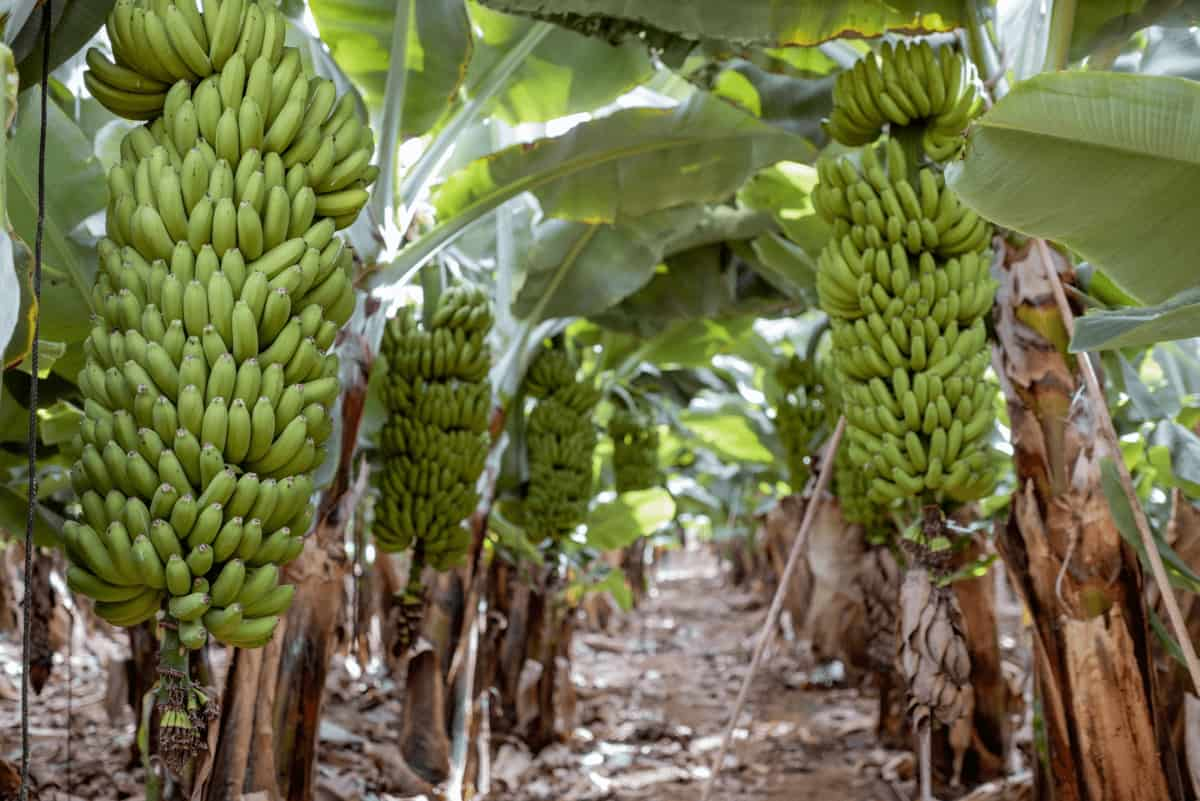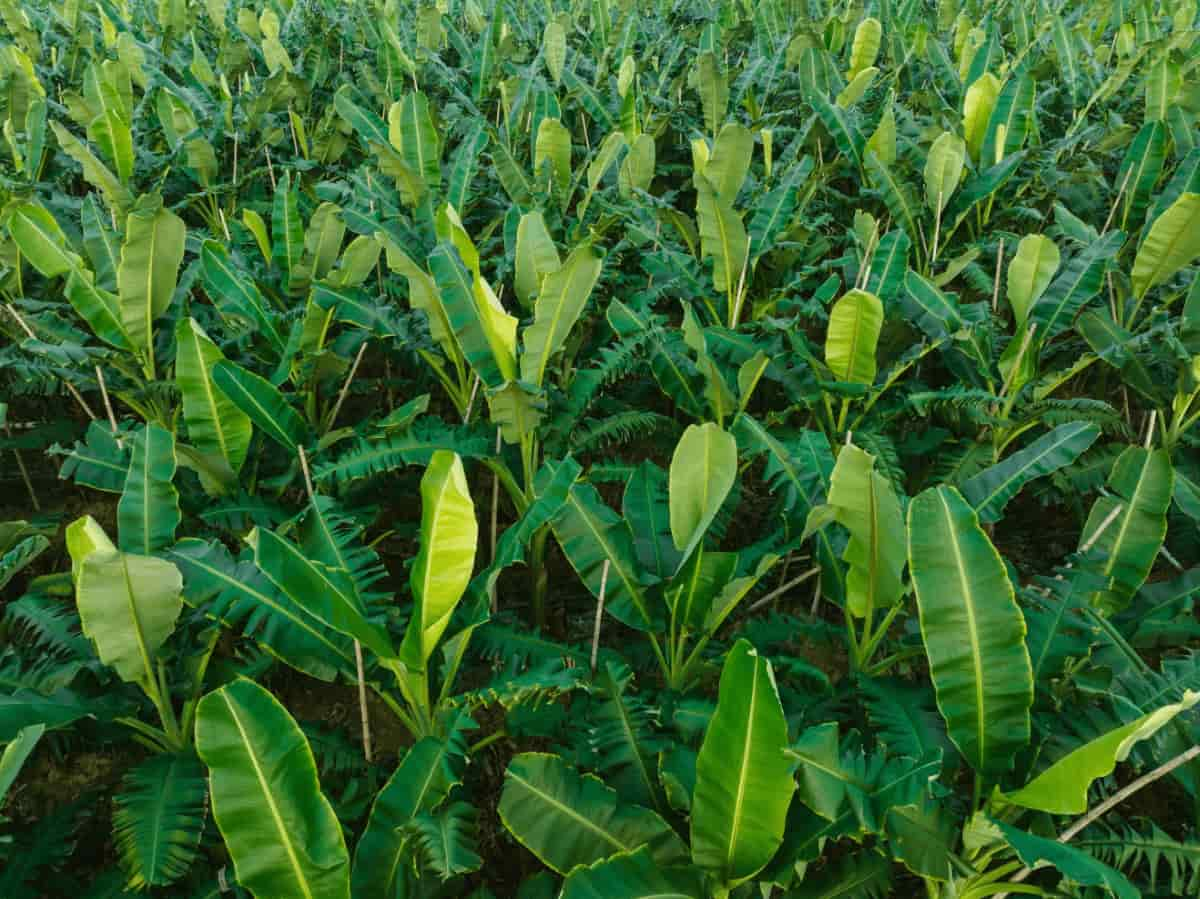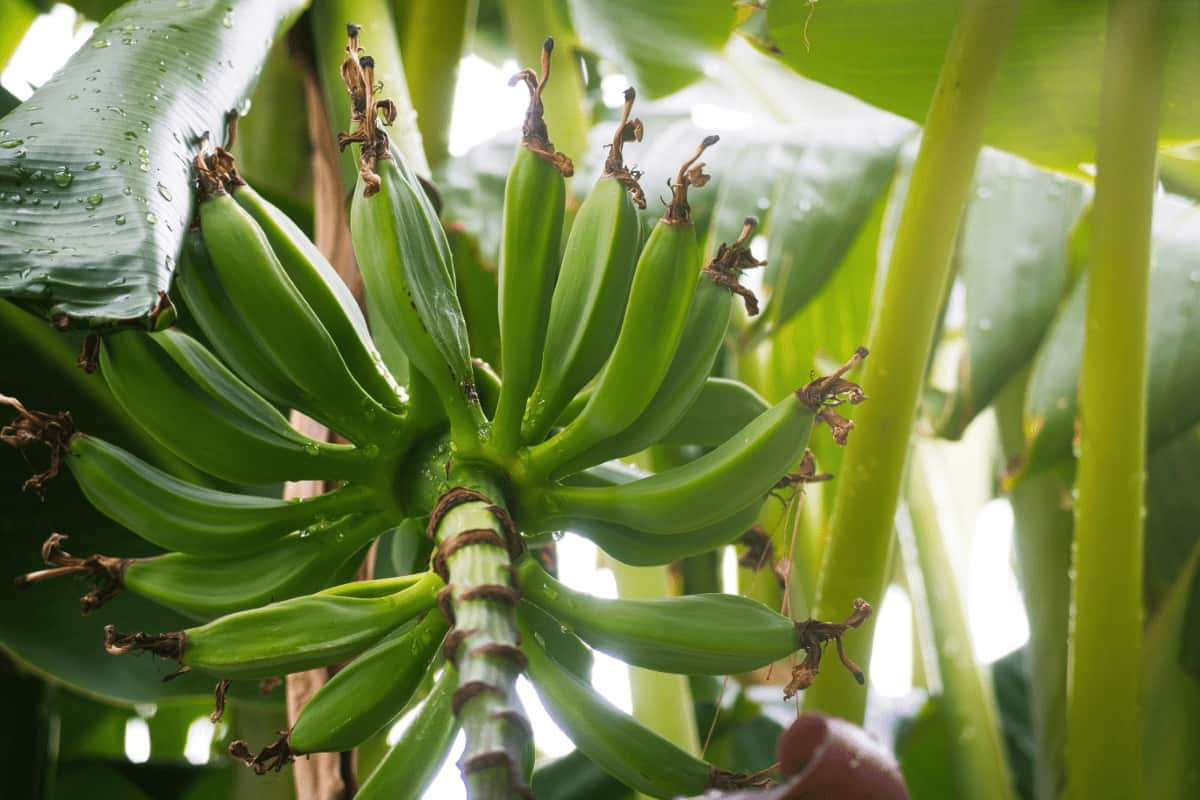Pests and diseases pose significant threats to banana plantations. Common pests include aphids, nematodes, and weevils, while fungal infections like Panama disease and Black Sigatoka are major diseases. These threats can devastate banana crops, causing yield losses and economic hardships for growers.

Effective pest and disease control strategies are essential to ensure the health and productivity of banana plantations, often involving integrated approaches such as pest-resistant banana varieties and careful monitoring and treatment to safeguard this important global crop.
How to Manage Pests and Diseases in Banana Plantation
Identifying Common Pests and Diseases in Banana Plantation
- Common pests and diseases in banana plantations can harm crop health and yield. Notable pests include aphids, which damage plant tissues by feeding on sap, and nematodes, microscopic worms that harm banana roots.
- Weevils, like the banana weevil and the burrowing weevil, tunnel into the plant, causing structural damage.
- In terms of diseases, Panama disease, caused by the Fusarium fungus, can lead to plant wilting and death.
- Black Sigatoka, a leaf-spot disease caused by the Mycosphaerella fungus, reduces photosynthesis and can defoliate the plant.
- Identifying and addressing these threats through proper monitoring and management is crucial for sustainable banana production.
Integrated Pest Management Strategies for Banana Plantation
- Pest-resistant varieties: Choosing banana cultivars with natural resistance to common pests and diseases.
- Cultural practices: Implementing good sanitation, crop rotation, and proper spacing to reduce pest and disease pressure.
- Biological control: Introducing natural predators or beneficial organisms to control pests, such as ladybugs for aphids.
- Monitoring and early detection: Regularly inspecting plants for signs of pests and diseases to enable timely intervention.
- Chemical control: Using pesticides judiciously as a last resort, adhering to recommended dosage and application guidelines to minimize environmental impact.
Cultural Practices for Preventing Pests and Diseases in Banana Plantation
- Proper spacing: Adequate spacing between banana plants allows for better air circulation and sunlight penetration, reducing the risk of fungal diseases like Black Sigatoka.
- Sanitation: Regular removal of dead leaves, pruned material, and plant debris helps eliminate potential breeding sites for pests and pathogens.
- Crop rotation: Avoid planting bananas in the same area year after year to disrupt the life cycles of soil-borne pests and diseases.
- Weed control: Keeping the plantation weed-free minimizes shelter and alternate hosts for pests.
- Healthy soil: Maintaining optimal soil health with proper nutrition and pH levels can enhance plant vigor and resilience.
In case you missed it: Best Practices for Banana Planting and Spacing: Various Banana Planting Methods

Biological Control Methods for Managing Pests in Banana Plantations
Biological control methods offer sustainable alternatives to chemical pesticides for managing pests in banana plantations. They involve introducing or encouraging natural predators, parasites, or pathogens to regulate pest populations. Examples include releasing beneficial insects like ladybugs and predatory mites to control aphids and spider mites. Nematode-trapping fungi can be employed against soil-dwelling nematodes.
Additionally, the use of entomopathogenic nematodes can target banana weevils. Encouraging native predators like birds and bats also aids in pest control. By harnessing the power of nature’s checks and balances, biological control methods help maintain a healthy and balanced ecosystem in banana plantations.
Chemical Control Options for Controlling Pests and Diseases in Banana Plantation
Selective and judicious use of pesticides can be effective when other methods prove insufficient. Fungicides, like those containing copper or synthetic chemicals, can target diseases such as Black Sigatoka. Insecticides like neonicotinoids or pyrethroids are used against pest species like aphids and banana weevils. Follow the recommended dosage and application guidelines, practice integrated pest management (IPM), and continually monitor for pesticide resistance to minimize environmental impact and preserve long-term banana crop health.
Monitoring and Early Identification of Pests and Diseases in Banana Plantation
Monitoring and early detection are critical for maintaining the health and productivity of banana plantations. This involves regular and systematic inspection of plants and their surroundings. Farmers should watch for visual symptoms like wilting, leaf discoloration, and pest damage. Using pheromone traps and sticky traps can help detect specific insect pests.
Moreover, advanced technologies like remote sensing and drones are increasingly employed for large-scale monitoring. Early detection allows for timely intervention, reducing the need for chemical treatments and preventing potential crop devastation. It acts as a cornerstone of integrated pest management (IPM) and supports sustainable banana cultivation.
In case you missed it: Different Methods of Banana Propagation: Exploring Various Techniques

Quarantine Measures to Avoid the Spread of Pests and Diseases in Banana Plantation
This involves strict controls on the movement of plants, soil, equipment, and other potential carriers. Quarantine zones should be established to isolate new plantings and monitor them for signs of infestation. Regular inspections, along with the use of certified disease-free planting material, help maintain a healthy plantation.
Also, educating workers and stakeholders about the importance of quarantine measures and compliance with regulations is essential. By enforcing these measures, growers can effectively prevent the introduction and dissemination of harmful pests and diseases, ensuring the long-term viability of their banana crops.
Disease-Resistant Banana Varieties for Reducing Pest and Disease Incidence
Disease-resistant banana varieties are pivotal in mitigating the impact of pests and diseases in plantations. Cultivars like the GCTCV series, which exhibit resistance to devastating diseases like Panama disease Tropical Race 4 (TR4), are widely adopted. The FHIA hybrids, such as FHIA-01 and FHIA-17, resist Black Sigatoka, a common fungal affliction.
Also, the sugar banana variety displays natural resistance to nematodes, a notorious soil-borne pest. By selecting and cultivating these disease-resistant varieties, growers can significantly reduce the occurrence of pest attacks and diseases, enhancing the sustainability and productivity of banana plantations while minimizing the need for chemical interventions.
Best Practices for Sustainable Pest and Disease Management in Banana Plantation
- Begin with pest-resistant varieties and adopt proper cultural practices, including adequate spacing and sanitation.
- Implement biological controls like beneficial insects and nematode-trapping fungi.
- Regular monitoring and early detection are crucial, utilizing traps and advanced technologies.
- Quarantine measures should be strictly enforced to prevent the introduction of new pests and diseases.
- Employ chemical controls judiciously, adhering to recommended dosages. Emphasize education and training for workers.
- Rotate crops and maintain healthy soils to disrupt pest and disease life cycles.
In case you missed it: The Complete Guide to Banana Farming: Steps of Planting to Harvesting for Beginners

Conclusion
In conclusion, managing pests and diseases in banana plantations is essential for sustainable and productive agriculture. Vigilant monitoring, early detection, and strict quarantine measures further fortify plantations against potential threats. By adopting these practices, growers can safeguard their crops and contribute to a thriving banana industry.
- Feed Your Flock for Less: Top 10 Tips to Save on Chicken Feed
- Ultimate Guide to Ossabaw Island Hog: Breeding, Raising, Diet, and Care
- Hatching Answers: The Top 10 Reasons Your Chickens Aren’t Laying Eggs
- Eggs and Economics: Breaking Down the Cost of Raising Backyard Chickens
- Defend Your Greens: Proven Methods to Keep Iguanas Out of Your Garden
- Ultimate Guide to Cinnamon Queen Chicken: A Comprehensive Guide for Beginners
- Ultimate Guide to California Tan Chicken: Breeding, Raising, Diet, Egg-Production and Care
- Ultimate Guide to Marsh Daisy Chicken: Breeding, Raising, Diet, and Care
- 10 Types of Chicken Farming Businesses You Can Start for Profits